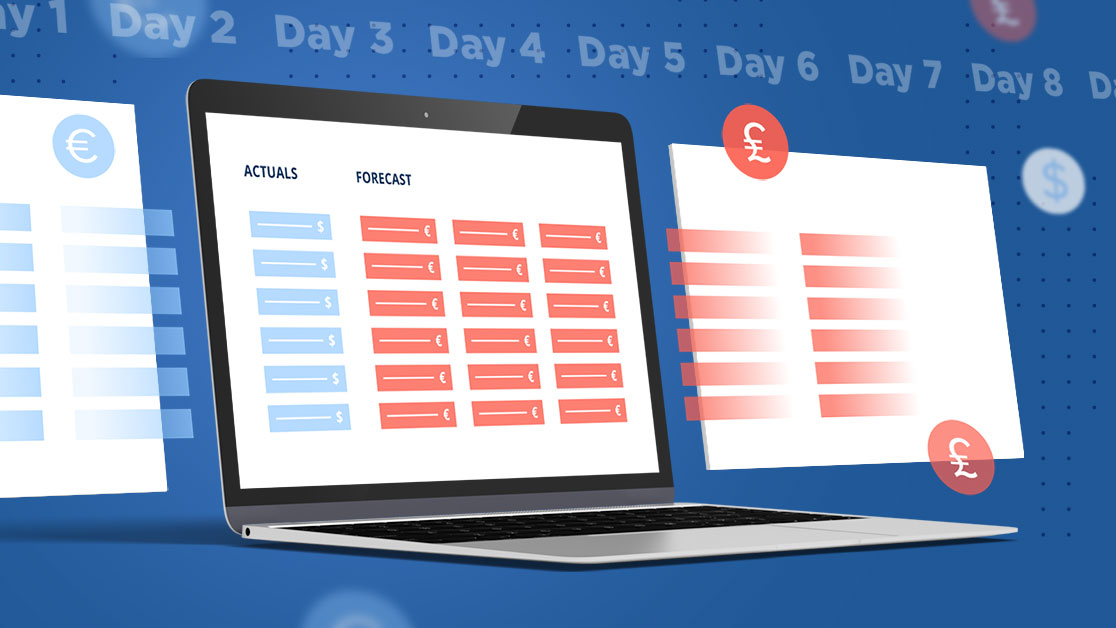
Bar a few notable exceptions, mainly from the select group of industries to thrive throughout the chaos of the coronavirus, businesses will continue to exercise considerable caution for the foreseeable future.
Cash flow liquidity forecasting helps treasurers, controllers, and anyone else responsible for financial planning to accurately predict a laser-like focus on future cash position by:
- meticulous short term-liquidity planning
- help inform the reporting and analytical activities that ensure a business can comfortably meet all its short-term cash flow obligations
- to help organisations to have an enhance group-wide cash position
- by magnifying the granularity of individual line-items which will display supplier and customer details in much greater detail.
Meticulous short-term liquidity planning, for example, is essential, particularly for those companies now existing on fine margins or operating under tight working capital cycles.
The Daily Cash Forecast Catalyst
This task requires head office treasury and finance teams to assume a level of financial control that is ably supported by a daily cash flow forecast. Daily forecasts typically project cash and liquidity 30 days – though occasionally up to 60 – into the future.
The primary objective of daily cash flow forecasting is to help inform the reporting and analytical activities that ensure a business can comfortably meet all its short-term cash flow obligations. Furthermore, in an environment as volatile as this one, various other factors could serve as an additional catalyst for a business to adopt a daily cash flow forecasting model.
A new credit agreement, for instance, will possibly include a covenant stipulating that an organization’s total net cash position does not go overdrawn. Switching to a revolving credit-line – or revolver – also generally leads to a greater emphasis on daily cash planning and forecasting to support loan drawdown and repayment decisions.
Internally, a business might conclude that the time required to produce longer-term forecasts is impacting its ability to make the prompt tactical cash management decisions.
Visibility, Granularity and Accuracy
There is also the issue of visibility, especially for large organizations, who may now want an enhanced view of their group-wide cash positions to better manage and monitor cash flow and liquidity on a day-to-day basis.
A daily cash forecast provides an instant overhead view of daily bank balances on a subsidiary level and, as part of the centralized forecasting process, these subsidiaries can have their respective cash positions forecasted.
By its very nature, the daily forecast produces superior granularity than more extended projection periods, which delivers the kind of detailed guidance many investors and shareholders are currently demanding.
Moreover, because data is primarily sourced from systems, the risk of human error is significantly decreased, while the daily forecast’s abbreviated time horizon ensures a comparatively high degree of accuracy. The result is a vivid picture of current and projected short-term cash and liquidity positions.
Inside the Daily Cash Forecast
The daily cash flow forecast is built bottom-up using a combination of customer receipts, intercompany flows, investing data, and capital expenditure. Akin to other cash and liquidity forecasts, it provides a high-level view of the underlying data.
The daily forecast is distinguishable from longer alternatives by the magnified granularity of individual line-items, which will display supplier and customer details in much greater detail.
Subsequently, it is significantly easier to track critical indicators such as key cash flow movements, short-term liquidity requirements, and, more broadly, working capital. Bank positions, meanwhile, are captured on a per-account basis, then aggregated into a consolidated view.
The Case for Automation
At first glance, the prospect of producing a group-wide daily cash flow forecast could appear daunting, even more so if a company is manually operating its existing forecasting model.
Daily cash forecasts, however, are driven by transaction data – generally sourced in ERP systems and banks – so producing one requires little human input. And so, a cash flow forecasting tool can be used to automatically create the daily forecast by automating the collection of data from the relevant systems.
Forecast Automation by the Numbers
- Data Collection
- Forecast creation
- Consolidation and reporting
- Variance analysis
- Dashboards and management reporting
What’s more, automating the process of uploading data makes refreshing the forecast a non-issue, regardless of the required frequency. Data consolidation, too, is reduced to the touch of a button. There is scope to instantly drill down to the lowest level of detail in the cash reports that have been automatically generated and circulated to stakeholders.
There is the added bonus of not having to trawl through mountains of spreadsheets to discover the underlying causes of forecast variances from across the business.
Finally, when the time comes to assess the liquidity and cash flow metrics that matter most to a business, headline KPIs will become extremely powerful if presented to stakeholders on a real-time cash flow dashboard.
CashAnalytics has helped multinationals across the globe to automate their cash and liquidity forecasting and reporting processes.



